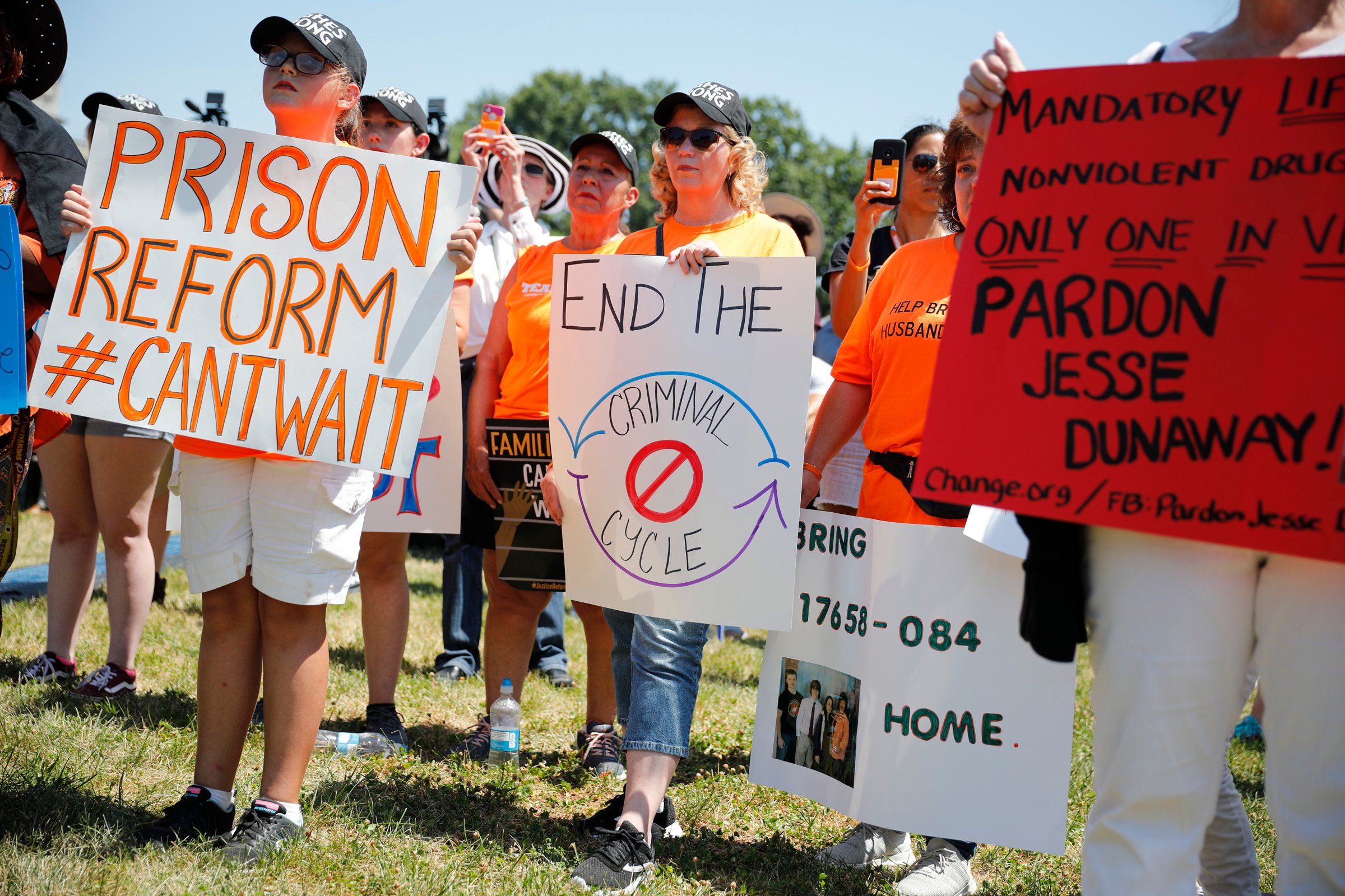
A report released this week by the Brennan Center for Justice examined both crime and imprisonment rates in the U.S. over a recent 10-year period — and says its findings show a “cause for optimism” even as much more progress should be made.
The liberal policy institute revealed that between 2007 and 2017, 34 U.S. states successfully reduced both their crime and imprisonment rates.
The report argues that the data “clearly demonstrate that the United States’ prison population can be reduced without sacrificing the public safety gains of recent decades.” The results appear to counter the “tough on crime” argument that lawmakers have used to justify heightened sentencing laws enacted in the 1970s and ’80s.
While crime and incarceration rates generally went down across the U.S., Ames Grawert, senior counsel at the Brennan Center and one of the authors of the report, tells TIME that he found the regional variations “especially interesting.” The Northeast saw the highest decrease in both incarceration rates (24% decrease on average) and crime rates (just over 30% decrease), despite the fact that Southern states like Georgia and Texas actually were the first to adopt reforms to lower incarceration in the early 2000s.
Massachusetts saw the highest decrease in both its crime rate (roughly 40%) and incarceration rate (roughly 51%), and the report notes that it happened as it reduced inmates serving non-violent drug convictions by 45% since 2008.
The Midwest, by contrast, only saw a one percent reduction in imprisonment rates on average. That modest decrease is almost entirely driven by Michigan’s 20% reduction in the prison population, which the report partially attributes to criminal justice reforms aimed at reducing recidivism. Unlike Michigan, imprisonment rates in many Midwest states actually rose, including in Nebraska (12%), South Dakota (10%) and Kansas (6%). The report notes that in the 16 states where the imprisonment rate went up, over half had poverty rates above the national average and many were hit hard by the opioid crisis.
Grawert theorizes that some states’ focus on a criminal justice response to the crisis — rather than a public health response — could have played a role in the uptick in imprisonment rates. For example, West Virginia, which has the highest age-adjusted rate of opioid overdose deaths in the U.S., saw its crime rate drop while its imprisonment rate climbed by 18%.
The report still argues its findings are promising — and experts from more conservative think tanks expressed similar opinions to TIME.
Clark Neily, the vice president of criminal justice at the conservative Cato Institute, tells TIME he didn’t find the report’s findings “surprising at all,” and that he thinks “it’s a very positive development that we can see the key to reducing crime in this country is not incarceration.”
John Malcolm, the vice president of the Institute for Constitutional Government at the right-leaning think tank the Heritage Foundation, also tells TIME that “there used to be a belief that if you started letting people out of prison, the crime rates would definitely go up.” Such assumptions helped drive mandatory sentencing minimums and “three-strike laws” across the country. Malcolm says this report, in addition to other studies, show that assumption is “not necessarily the case.”
Support for scaling back “tough on crime” policies has risen amongst conservative policymakers as well and more liberal lawmakers, who have more historically opposed such laws. In 2018, President Donald Trump signed the First Step Act, which in part attempts to lessen the severity of federal mandatory sentences. And, as the Brennan Center’s report makes clear, states with lawmakers on both sides of the aisle have attempted to reduce their rate of incarceration over the past decade, to varying degrees of success.
But, as Grawert notes, “by no means is this the end of mass incarceration.” The United States still incarcerate people at a higher rate than any other Western democracy.
“It’s progress,” he says, “but it’s minor.”
More Must-Reads From TIME
- The 100 Most Influential People of 2024
- The Revolution of Yulia Navalnaya
- 6 Compliments That Land Every Time
- What's the Deal With the Bitcoin Halving?
- If You're Dating Right Now , You're Brave: Column
- The AI That Could Heal a Divided Internet
- Fallout Is a Brilliant Model for the Future of Video Game Adaptations
- Want Weekly Recs on What to Watch, Read, and More? Sign Up for Worth Your Time
Write to Madeleine Carlisle at madeleine.carlisle@time.com